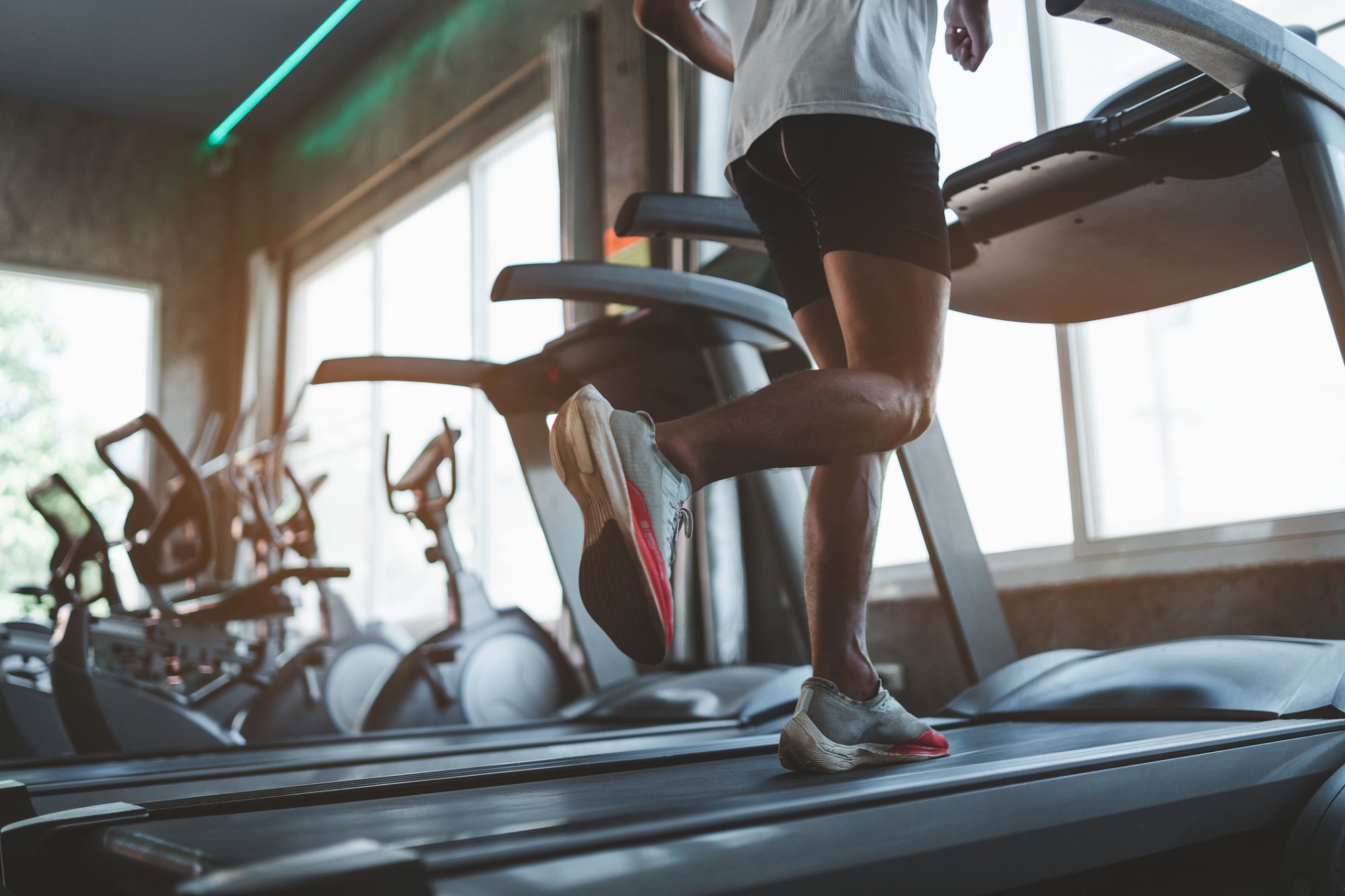Fitness
Gainesville Health and Fitness: Cycling

GAINESVILLE, Fla. (WCJB) – Cycling is a great way to get exercise, especially when the weather isn’t the best.
TV20s Kristin Chase shows how to prepare for a Skycycle class in this week’s Gainesville Health and Fitness.
RELATED: Gainesville Health and Fitness: Strength training
Click here to subscribe to our newsletter.
Copyright 2024 WCJB. All rights reserved.

Fitness
Think You're a Strong Hiker? Test Your Trail Strength with These 4 Exercises

“], “filter”: { “nextExceptions”: “img, blockquote, div”, “nextContainsExceptions”: “img, blockquote, a.btn, a.o-button”} }”>
Heading out the door? Read this article on the new Outside+ app available now on iOS devices for members!
>”,”name”:”in-content-cta”,”type”:”link”}}”>Download the app.
Strength tests can be extremely useful for hikers who are training for a big objective, or simply want to learn more about their own fitness levels. Last year, we published four assessments to test your trail readiness. There are plenty of other physical tests you can do to see how strong your hiking muscles are. Below are four exercises you can perform to monitor your overall hiking fitness and highlight major areas that feel powerful or could use more training. (Feeling really strong? Combine both tests for a complete full-body assessment.)
How To Perform This Strength Test
Objective measures are useful, but subjective results reveal more about your fitness. For example, you might be able to complete 20 single-leg sit-to-stands per leg on the initial assessment, which is a great score. But if the exercise left you tired and sore for days, that’s less ideal.
Perform the strength test honestly and stop once you can no longer execute a full range of motion with good form. If you can’t achieve the baseline targets on the first go-around, keep strength training and try again in four to six weeks.
It’s helpful to re-test regularly to understand your progress. Upon reassessments, think back to your previous attempt. Did the effort required to complete any particular assessment feel easier? Did you recover quickly? Was there any lingering soreness? Were your muscles burning at any point? These subjective results are a great measure of progress that won’t necessarily appear in objective findings.
To interpret your results, compare the scores for your right and left legs. If they are equal or within a few reps, that’s good. If there is a difference of more than five reps per side, add an extra set of the suggested exercises for the weaker side. Your training is going well when the assessments all meet the baseline.
Single-Leg Sit-To-Stand
One of the more challenging assessments, the single-leg sit-to-stand, primarily targets the quads, hamstrings, adductors, glutes, core, and ankle mobility. What makes this assessment hard is the control required to lower down to the bench or chair.
Begin this assessment standing with your back to a stable chair or bench. With control, you’ll lift one leg and hold it in front of you while lowering to sit on the bench or chair with the opposite leg. Return to standing using one leg and repeat until you can no longer perform the motion with controlled form. End the assessment if you start using your arms for momentum or if you start using a rocking motion to come up from the seated position.
For this assessment, the goal is 25 controlled reps per leg. If you fall short, add some single-leg step-downs and pistol variations into your regular training routine.
Single Leg Dorsiflexion
This exercise tests the endurance of the big shin muscle, the anterior tibialis. This muscle helps lift the foot when walking and lowers the foot back to the ground after the heel makes contact. Basically, it prevents you from tripping. Strong shin muscles can also ward off issues like shin splints and help make ascents and descents easier.
Stand near a countertop, wall, or doorway if you need to hold onto something for balance. While keeping your heel on the floor, raise the rest of your foot as high as possible—the motion is like lifting your foot off a gas pedal. Avoid shifting your hips backward as you raise your foot. With control, lower your foot back down to the floor.
The goal is 40 repetitions for each leg. If you come up short, add single-leg dorsiflexion from a 4- to 6-inch step to your weekly workouts, or try the wall lean dorsiflexion variation. Both will provide a greater range of motion and are excellent for building strength.
Side Plank
The side plank is an excellent exercise for building stability and core strength. Specifically, it targets the obliques, abs, and other stabilizing muscles required for carrying a fully loaded backpack.
To perform a side plank, lie on your side with your feet stacked and your elbow underneath your shoulder. Raise your hips off the floor, aiming to keep your trunk straight and still from your head to your feet. Don’t let your hips sag toward the floor; stay tight. Once you can no longer maintain position, lower your hips back to the floor and repeat the assessment on the opposite side.
Your goal is to hold the plank for 90 seconds per side. If your time isn’t quite there, don’t worry. Train any side plank variation or weighted marches (such as suitcase marches or farmer carries) to get stronger. Pallof isometric holds or Pallof presses are also great additions to any training program.
Ankle Dorsiflexion
This test assesses your ankle’s range of motion, which, if limited, can increase the risk of ankle sprains and injury. Place a tape measure perpendicular to a wall, measuring away from it. Get down on one knee in front of the wall with your leading foot 2 to 3 inches from the wall. Keeping your hips straight, glide your front knee forward to touch the wall, and keep the heel of that foot down. If you can’t touch the wall with your knee while keeping your heel down, move closer to the wall and retest. If you can touch the wall, move your foot back and retest. Record your score (the furthest distance you can place your foot from the wall while keeping your heel down) for each ankle and use the chart below to find your degree of dorsiflexion.
Normal ankle dorsiflexion is 40 degrees, or about 4.5 inches from the wall. If you fall below 34 degrees of dorsiflexion, roughly 4 inches from the wall, you have a fivefold increased risk for ankle sprains. In addition, if there is an asymmetry of more than 5 degrees per side, your risk of injury increases.
|
Inches from Wall
|
Degree of Dorsiflexion
|
|
5
|
45 degrees
|
|
4.5
|
41 degrees
|
|
4
|
36 degrees
|
|
3.5
|
31 degrees
|
|
3
|
27 degrees
|
|
2.5
|
22 degrees
|
|
2
|
18 degrees
|
|
1.5
|
13 degrees
|
|
1
|
9 degrees
|
If your measurement falls below 40 degrees, or you have an asymmetry greater than 5 degrees, add ankle mobility work to your workout warm-ups. There are three options to improve dorsiflexion: Start with the ankle rocker, progress to a dumbbell, and finally, use a band to mobilize the joint. If your retest score does not improve after four to six weeks of ankle rocker exercise, move on to the dumbbell or band option. Once your mobility improves, reduce the frequency to once per week.
Fitness
Jay Cutler Shares His 'Number One' Exercise for Hamstrings – Muscle & Fitness
Four-time Mr Olympia champ and International Sports Hall of Fame inductee, Jay Cutler, is a trailblazer who has helped to elevate the bodybuilding industry and at 50-years-young is now training a new generation of rock-solid athletes through his teachings at fitness conventions and on social media where he has millions of followers.
In an Instagram post on June 8, 2024, Cutler shared his “Number One” exercise for hamstrings.
Jay Cutler’s Go-To Exercise for Hamstrings
“This has always been my number one exercise,” shares Cutler. “In fact, when I lived in Massachusetts, okay, I lived in Worcester, and I end up choosing to go to a gym in Framingham, Mass, which is probably 25 minutes away when I had [a gym] like right next door to my house, just to use a seated leg curl, which at the time it was a Flex, it was called a Ham Tractor.”
Cutler may be known for his “Quad Stomp” on stage, but his success in bodybuilding hails from an all-encompassing journey to growing his legs. The hamstrings are comprised of the biceps femoris long head (bi-articular) and short head (mono-articular), semitendinosus (bi-articular) and the semimembranosus (bi-articular), and they assist with the movement of the hips and knees. Since the seated leg curl places stress on both our knees and hips, it makes this a great movement for targeting those muscles.
Studies have also shown that the seated leg curl provides greater hypertrophy than prone (front-lying) curls, making them excellent for building mass. “It’s always, always, always, if you ever follow my videos, its always the first movement I do,” explains Cutler. “Why? It just seems to target my hamstrings. I get a crazy pump after doing this one movement.”
The bodybuilding icon lays out his approach, explaining that he does three working sets and notes that he throws in one or two feeler sets beforehand, to get a gauge on the type of weight that he wants to use in the working sets. “I’m gonna focus on doing ten or twelve reps,” he says of each set. In the video, Cutlet starts with around 130 pounds in his first feeler set and shares why he sticks in the ten-to-twelve rep range. “So, whether it’s a warmup or a working set, I always still focus on about the same reps,” he explains. “The high reps; s**t, It doesn’t help anything. Everyone thinks you get cut up if you do more high reps. Misconception.”
To follow more of Jay Cutler’s bodybuilding tips follow him on Instagram!
Fitness
Exercise considered safe for people with hypertrophic cardiomyopathy in new guidelines

Recent revisions to guidelines for people with hypertrophic cardiomyopathy (HCM) aim to clear up confusion about exercise recommendations
HCM is an inherited heart condition that causes the heart muscle to thicken, leading to breathlessness and chest pain. Affecting approximately 1 in 500 people, many cases of HCM remain undiagnosed.
Despite previous concerns, new guidelines show the importance of exercise for people with HCM.
Updates guidelines for people with HCM
The updated guidelines, published in the American Heart Association journal Circulation, stress that mild to moderate recreational exercise benefits those with HCM.
Experts, including Dr. Steve Ommen, medical director of the Mayo Hypertrophic Cardiomyopathy Clinic, advocate for at least 150 minutes a week of moderate-intensity aerobic exercise or 75 minutes of vigorous aerobic exercise, aligning with general physical activity recommendations.
The shift in the new guidelines is the view on vigorous exercise. The update suggests that, with proper monitoring and annual evaluations, people with HCM can safely engage in vigorous activities. This represents a shift from older guidelines that limited HCM patients to low-intensity sports due to fears of sudden cardiac death.
Safely exercising with HCM
Recent studies support this change. Research shows that vigorous exercise does not significantly increase the risk of death for people with HCM compared to moderate or no exercise. One study involving 1,660 people with HCM found no heightened risk of death from vigorous exercise. Another study, focusing on elite athletes with genetic heart diseases, showed that with thorough evaluations, these athletes could safely return to their sports.
The guidelines now recognise that HCM affects individuals differently, for most people with HCM, universal bans on vigorous physical activity or competitive sports are no longer recommended. Instead, the emphasis is on individualised assessments and shared decision-making between patients and doctors.
Athletes with HCM are advised to undergo annual evaluations and consultations with HCM specialists to determine safe physical activity levels. Factors like age, family history, heart scans, and exercise stress test results help doctors assess the risks and provide tailored exercise recommendations.
Editor’s Recommended Articles
-

 Fitness1 week ago
Fitness1 week agoThe five simple exercises that are crucial in midlife
-

 Politics1 week ago
Politics1 week ago5 things to know about Hunter Biden trial
-

 World1 week ago
World1 week agoChina denies fuelling Russia-Ukraine war tensions, says it supports peace
-

 World1 week ago
World1 week agoEconomy, migration: Voters' main concerns ahead of elections
-

 News1 week ago
News1 week agoWhat is D-Day? How the Normandy landings led to Germany’s defeat in World War II | CNN
-

 World1 week ago
World1 week agoWill liberals be biggest losers of EU election?
-

 Politics1 week ago
Politics1 week agoHunter Biden trial enters 3rd day with cross-examination of FBI agent
-

 Politics7 days ago
Politics7 days agoTrump campaign accelerates vetting of potential running mates




















